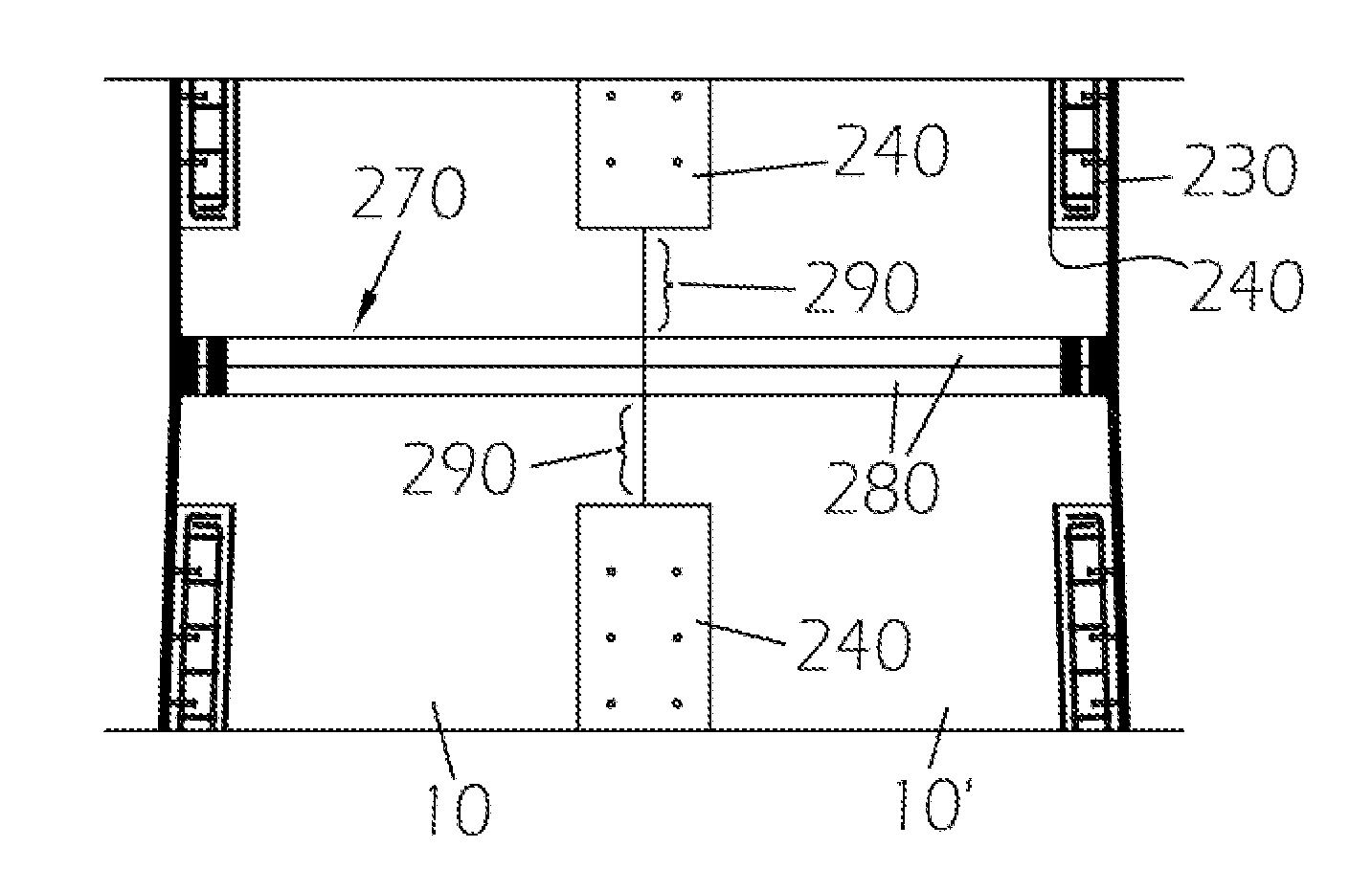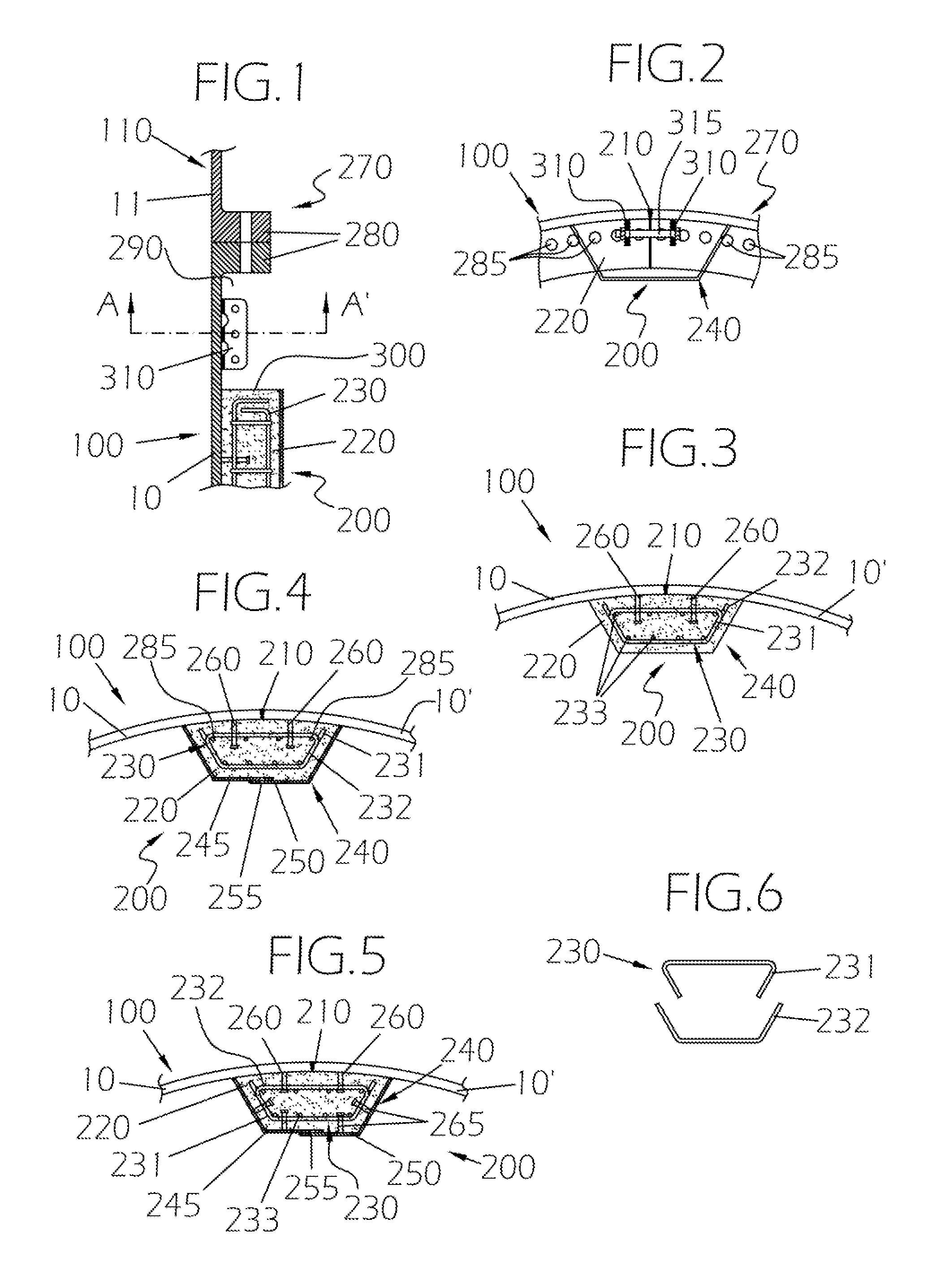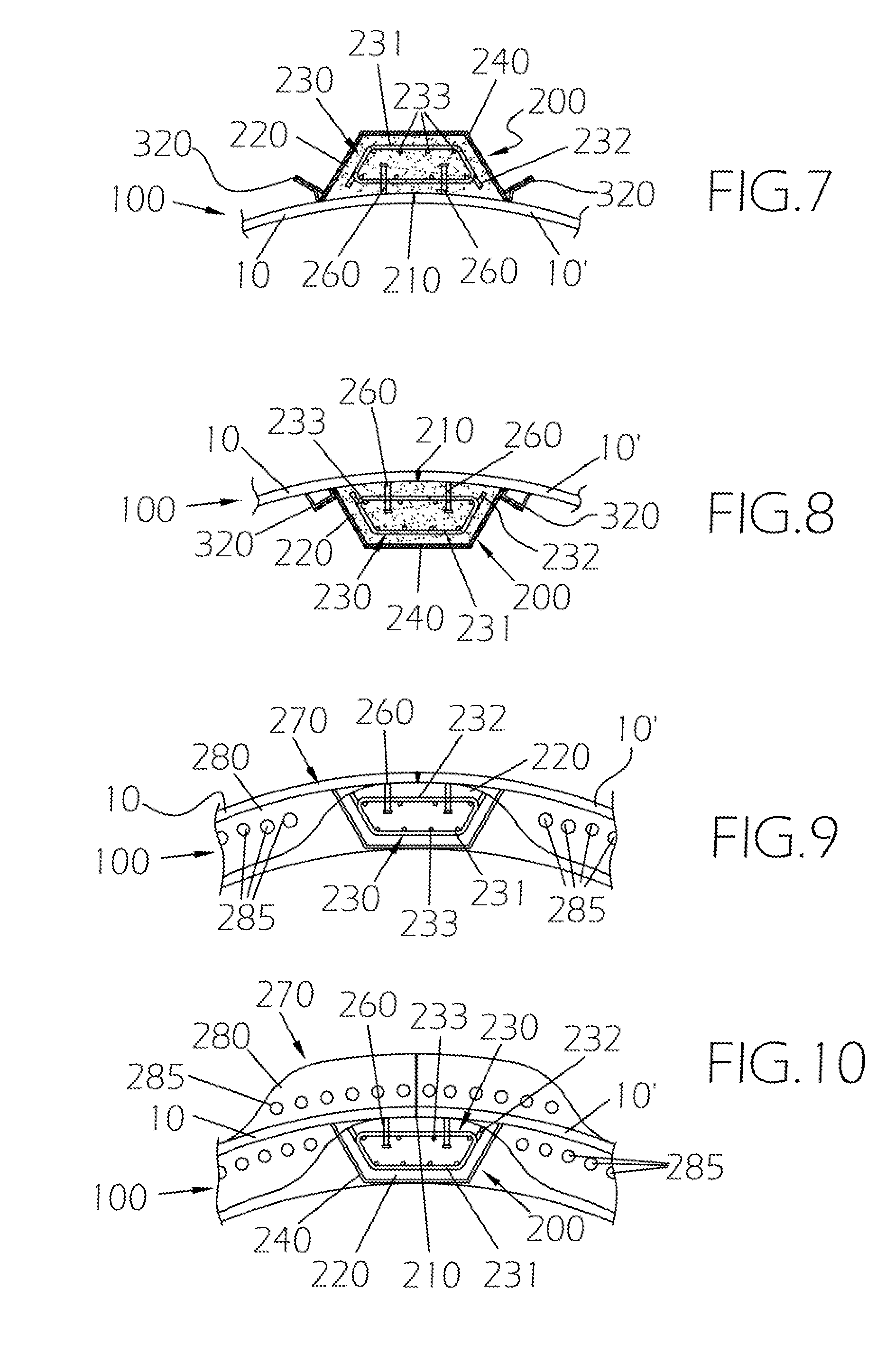Composite Connection For A Wind Turbine Tower Structure
- Summary
- Abstract
- Description
- Claims
- Application Information
AI Technical Summary
Benefits of technology
Problems solved by technology
Method used
Image
Examples
Embodiment Construction
[0036]A tower structure (a substantially hollow structure) comprises a plurality of tower sections 100, 110. Two of them are generally depicted in FIG. 1 for purposes of clarity. In use, the tower sections 100, 110 are arranged on one another for forming a wind turbine tower structure. A tower section 100 is formed with a plurality of shell segments 10, 10′. Likewise, the contiguous tower section 110 fixed to said other tower section 100 is formed with corresponding shell segments, only one of which is shown and designed at 11. Each shell segment 10, 10′, 11 consists of a unitary curved plate made of metal such as steel.
[0037]FIG. 1, for example, shows part of two shell segments 10, 11 of different tower sections 100, 110 with one section arranged above the other and defining a cylindrical or frustoconical tower structure depending on the geometry of the shell segments 10, 10′, 11 and therefore that of tower section formed.
[0038]First connecting means 200 are provided for mutually j...
PUM
 Login to View More
Login to View More Abstract
Description
Claims
Application Information
 Login to View More
Login to View More - R&D
- Intellectual Property
- Life Sciences
- Materials
- Tech Scout
- Unparalleled Data Quality
- Higher Quality Content
- 60% Fewer Hallucinations
Browse by: Latest US Patents, China's latest patents, Technical Efficacy Thesaurus, Application Domain, Technology Topic, Popular Technical Reports.
© 2025 PatSnap. All rights reserved.Legal|Privacy policy|Modern Slavery Act Transparency Statement|Sitemap|About US| Contact US: help@patsnap.com



